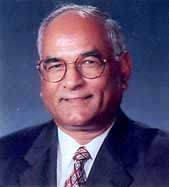Scientific Program

Sen Pathak
The University of Texas
Biography:
Sen Pathak, Ph.D., F.N.A.Sc., Geneticist and Professor of Cell Biology and Laboratory Medicine at The University of Texas M.D. Anderson Cancer Center in Houston; Professor, Genetics Program at The Graduate School of Biomedical Sciences, The Health Science Center and at The School of Health Professions, Houston; Professor of Medicine at Baylor College of Medicine; Senior Scientist (adjunct) in the Department of Genetics at Southwest Foundation for Biomedical Research, San Antonio, Texas, USA; Visiting Professor of Genetics at The University of Sao Paolo, Faculty of Medicine at Ribeirao Preto, Barazil; and currently a Lifetime Emeritus Professor of Cancer Biology and a Distinguished Research Professor of Genetics at The University of Texas M.D. Anderson Cancer Center at Houston, Texas. He is Internationally recognized scientist for his pioneering research work first on Mammalian Population Cytogenetics and lately on human and other mammalian Cancer Genetics.
Abstract
Attention deficit and hyperactivity disorder in children (excessive mobility, attention and concentration deficit, impulsivity) are important health problems that may affect life quality lifelong. Attention deficit generally take place with dyslexia, dyscalculia and dysgraphia which are known generally as specific learning difficulty (SLD) Principal biochemical mechanism underlying attention deficit and hyperactivity disorder might be related with inadequate synthesizing of dopamine and noradrenalin in brain or rapidly catabolism of these molecules. Dopamine, noradrenalin (norepinephrine) and epinephrine (adrenalin) molecules are named generally as catecholamines. Catecholomines are synthesized at suprarenal glands and from tyrosine amino acid at nerve system First and principal control enzyme named as tyrosine hydroxylase catalyses the hydroxylation of tyrosine to DOPA (dihydroxyphenyl alanine). Composed DOPA is decarboxylased by DOPA-decarboxylase enzyme which is a cytoplasmic enzyme to dopamine (dihydroxy phenyletylamine). Dopamine is converted to epinephrine through dopamine beta hydroxylase. Epinephrine composed this way is converted to norepinephrine through COMT (cathecol-o-methyltransferase) [1]. There is no recalling mechanism of cathecolamines released at adrenal medulla. Cathecolamine synthesing cells at adrenal medulla are named as “chromaffin cells” because these cells are stained to reddish-brown color with potassium dichromate. Chromaffin cells are also found in heart, liver, kidneys, gonads and adrenergic neurons of postganglionic sympathetic system and in central nerve system.
- Forensic DNA Analysis
- Forensic Pathology and Diagnosis
- Forensic Chemistry and Toxicology
- Criminology
- Forensic Medicine
- Forensic Odontology
- Blood Spatter Analysis
- Ballistic Analysis
- Forensic Entomology
- Anthropometry
- Forensic Dactyloscopy
- Cyber Security
- Environment Toxicology
- Emergency Toxicology

